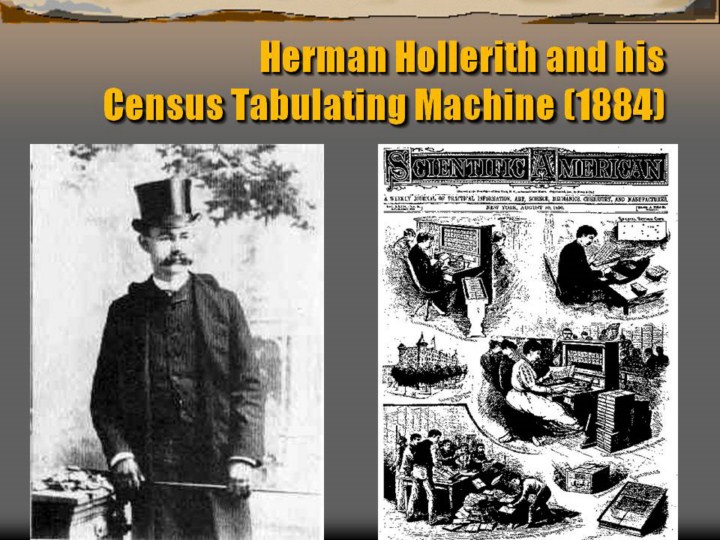| front |1 |2 |3 |4 |5 |6 |7 |8 |9 |10 |11 |12 |13 |14 |15 |16 |17 |18 |19 |20 |21 |22 |23 |24 |25 |26 |27 |28 |29 |30 |31 |32 |33 |review |
 |
Herman Hollerith worked as a statistician for the U.S. Census Bureau in the 1880s and 1890s. The U.S. Constitution requires a census count every ten years so that the membership of the House of Representatives will be proportional to the population of each state. This is always a moving target, hence the ten year review of the current state of demographic affairs. The 1880 census took seven years to process. The end of the 19th/beginning of the 20th centuries was the period of highest rate of immigration to the United States. Hollerith deduced,and it didn’t take a rocket scientist to conclude, that the next census would take longer than ten years, the results not available before the whole census counting thing had to start again.
So, as the saying goes, “necessity became the mother of invention” and Hollerith designed and built the Census Counting Machine illustrated here and in the next slide. Punched cards (a la Jacquard looms) were used to collect the census data (the origin of the IBM punched cards) and the cards were fed into a sorting machine before being read by the census counting machine which recorded and tabulated the results. Each card was laid on an open grid. A matrix of wires was lowered onto the card and wherever there was a hole in the card, a wire fell through, making an electrical connection which triggered a count on the appropriate dial(s) in the face of the machine. Very simple, very effective. The 1890 census took just three months to process even though quite a bit more data was collected than ever before.
Hollerith was the first American associated with the history of computers. As you might expect, he was also the first to make a bunch of money at it. His company, the Tabulating Machine Company, became the Computer Tabulating Recording Company in 1913 after struggling in the market and merging with another company that produced a similar product. The company hired a gentleman named Thomas J. Watson in 1918 who was primarily instrumental in turning the company around. In 1924, the company was renamed International Business machines (IBM) Corporation. The rest, as they say, is history… |